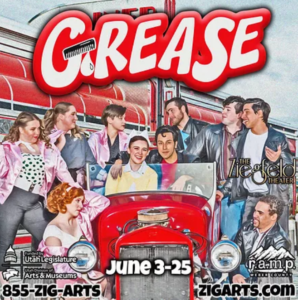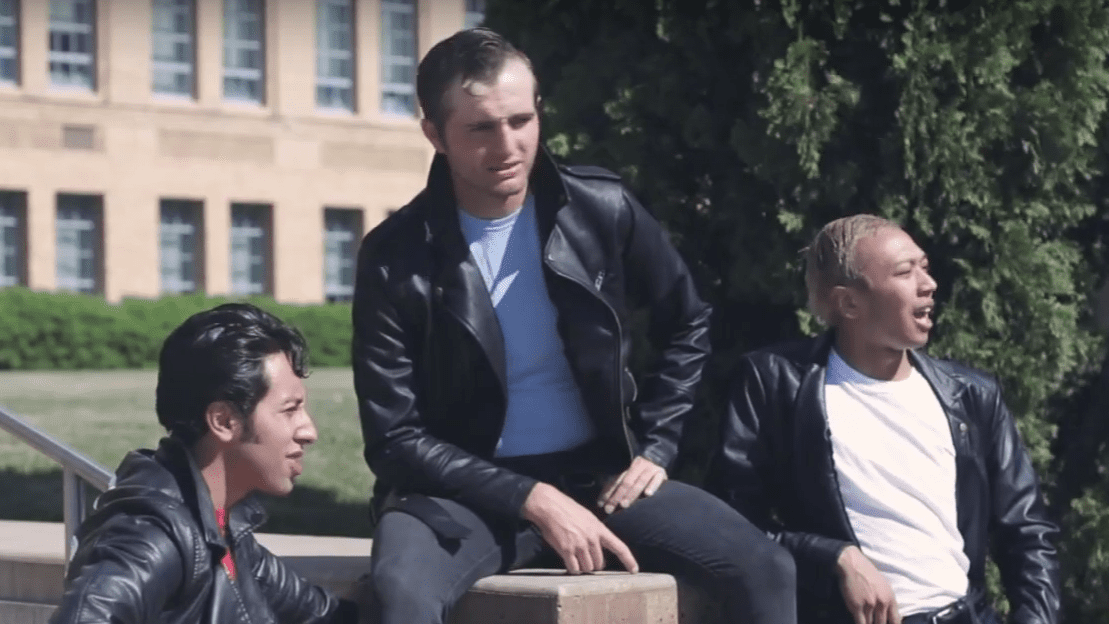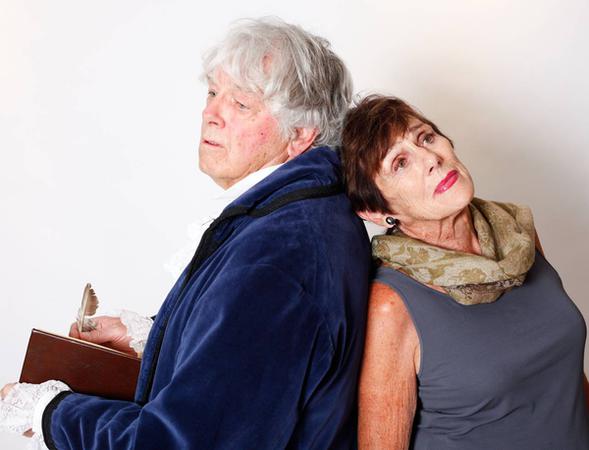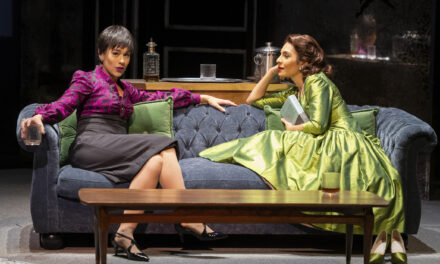OGDEN — Grease is one of those musicals that audiences feel strongly about, either for or against: the dances are fun, the songs are catchy, and everybody wants to “Hand Jive, Baby.” Or the storyline is dreadful, the costumes are terribly cliché, and it glosses over some really negative aspects of 1950s America. In response, one could say “It’s Grease. What did you expect?” and ignore the misogyny, bullying, gay bashing, and racism, not to mention the crass content, or face it head on, play up the goofiness and treat it more as a satire than a true representation of a bygone and beloved era. Director Eb Madsen has chosen the latter approach, and it works well, for the most part. This production of Grease is as good or better than most that the show’s devotees can find in Utah. And those who hate Grease will probably give it a pass anyway.

Show closes July 17, 2022.
By far, the best in this production is the actors. What a tremendous gathering of talent! Every role was so well cast, and each actor created a distinct character that was clearly evident from their first entrance. Sydney McAllister was delightful as Sandy Dumbrowski, playing her as much savvier and surer of herself than the typical Olivia Newton-John replicas. McAllister’s Sandy was sweet and likeable, but not a pushover. Angel Martinez brought Danny Zuko to life with great energy and lots of appeal. Martinez’s charisma and talent and fearless portrayal of Danny’s both arrogant and sincere sides were wonderful.
But I could say much the same for all the actors. The Pink Ladies, including Jan (played by Maddie Lalli), Marty (played by Kaylee Nelson), Rizzo (played by Alice Maphey) and Frenchy (played by Madison Portillo) were delightful and fit together without becoming too one-note. Similarly the T-Birds Doody (played by Dylan Floyd Panter), Roger (played by Avery Sims), Kenickie (played by Alma Lambson), and Sonny (played by Mejai Perry) were so fun and funny and really had the camaraderie of high school boys. They were all great, but I must admit that Perry was my favorite. The ensemble was also great, filling in all the extra roles with energy and humor.
One of the things people love about Grease is the music, and the familiar songs that show up in heavy rotation in karaoke bars across the nation. This cast perfectly executed the songs. “Those Magic Changes,” “Greased Lightening,” “Sandra Dee,” and so many more songs wonderfully showcased the talented actors and singers. Music director Landon Weeks worked with his cast to create a beautiful sound. Harmonies were strong and clear, diction was good, and I felt compelled to sing along. (Maybe one show could be a sing-along performance, Ziegfeld?)
Choreographer McKenna Ward understood that people also love Grease for the dancing. Ward used her cast to great effect, showcasing their strengths and allowing them to shine. I preferred the original choreography that Ward created to the steps that imitated the film version of the show, but using a combination of both was an understandable and expected choice. Everyone knows the Hand-Jive. So, it is a bad idea to mess with it.
The other production elements were well done but didn’t stand out particularly. Costume design by Timery Reis was standard for Grease: pink satin jackets and a variety of skirts and pants on the girls and leather jackets and jeans for the boys. I appreciate that Reis did not default to the cliché of “everybody wore a poodle skirt in the ’50s.” The costumes were well-though out and supported rather than detracted from the storyline. That is a win.
Set design by Madsen and Caleb Parry was a combination of modular units that could be rearranged for each scene and projections which gave context to the various locations. The concept usually worked well, although it was a little odd to have a backdrop of school lockers in Marty’s bedroom. However, set changes were at times awkward and lengthy. (This should smooth out as the run continues.) Additionally, levels and doorways seemed foreshortened in order to leave enough room at the top of the stage for the projections. Those projections, though, were very appropriate and helpful in setting the scene.
One delightful addition to the show was a pre-show reel that mimicked the opening scenes from the movie. Each character was introduced in various vignettes shot around Ogden: Ogden High School, an ice cream shop, etc. My one disappointment was that the projection they used for Rydell High wasn’t Ogden High School, after establishing that beautiful historic building as the location in the introduction reel. It is very minor but did give me a pang of regret each time it was shown, which took me momentarily out of the story.
One other detractor for me was the length of the show. While act one clipped along with great energy and good pacing, act two was significantly slower and felt overly long. Not sure if this is a pacing issue that will resolve with more performances, or if they added one or two too many songs from the movie which dragged out the resolution. In any case I found myself looking at the clock repeatedly wondering ‘how much longer’.
A word of caution to potential audience members who have never seen a stage version of Grease: readers who are sensitive about what their children see should use caution. There are obscene gestures, crass comments and swearing, a bare backside or two, references to teenage sex, and a pregnancy scare. Plus, the core plotline shows a sweet wholesome girl mocked for her standards about drinking and pre-marital sex, who ultimately changes everything about herself to be accepted by her friends and to appeal to a boy. The Zig has marketed this production as PG-13, which is an appropriate rating for this production and the book, music, and lyrics by Jim Jacobs and Warren Casey.
If you still Grease and want to see a version that is well done and ticks all the boxes, the Ziegfeld Theater has good production waiting for you. The Zig’s Grease has everything that the play’s fans want: great actors, superb singing and dancing, and fun show with lots of appeal.




